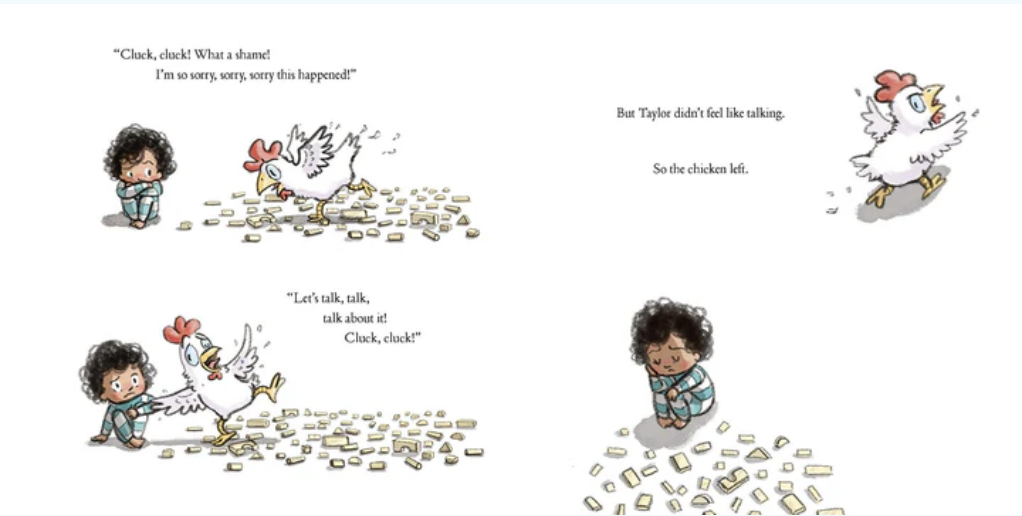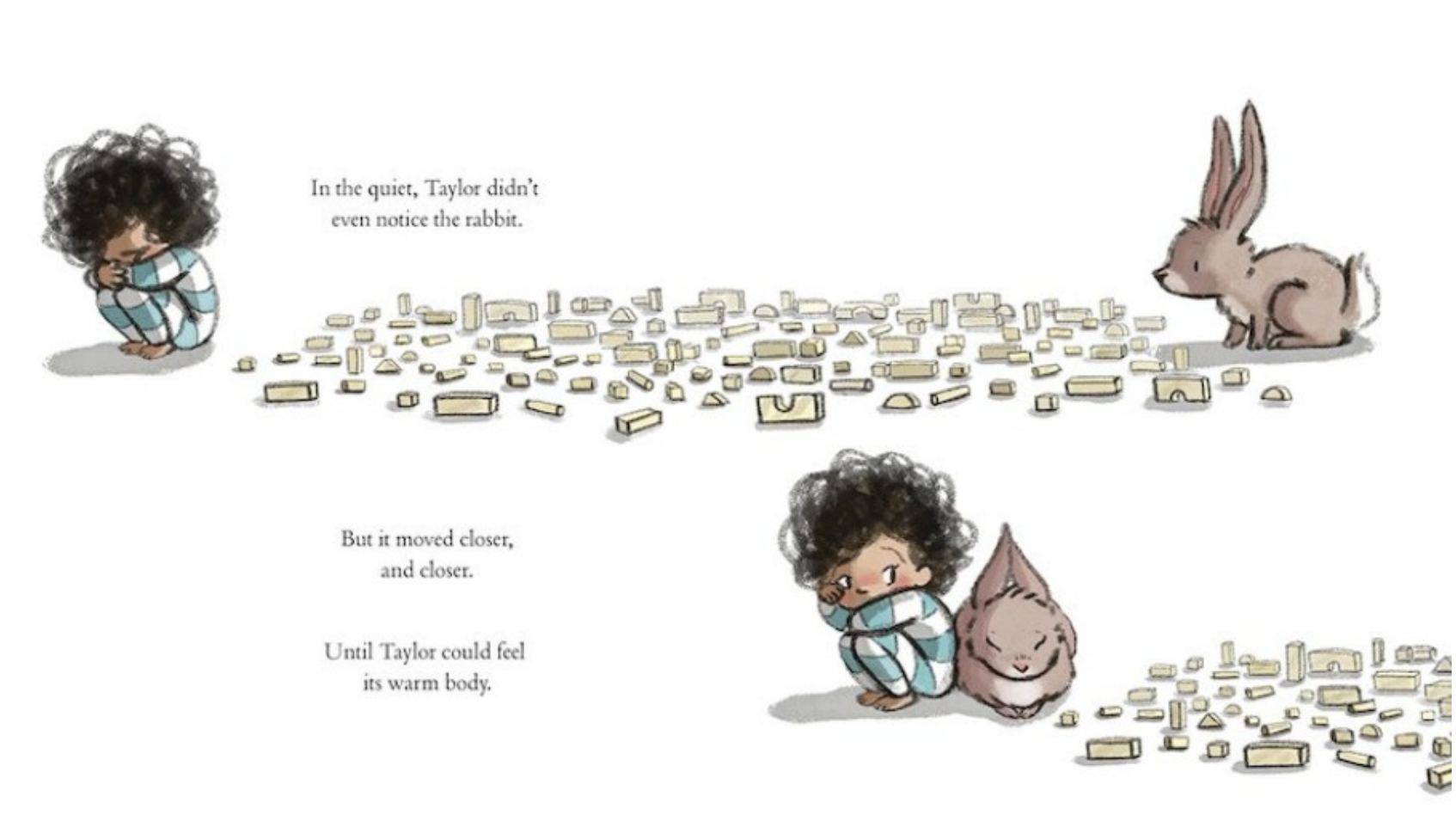The lesson I didn’t expect to learn from a picture book
I learned one of the most valuable parenting lessons not from a parenting book, but from a children’s picture book. And it's not because of what it says, but what it doesn't.
This simple story has become a touchstone whenever I’m faced with someone who is upset, angry, frustrated or overwhelmed. Keeping it in mind has helped me be more aware of how I approach conflict and connection.
The Rabbit Listened by Cori Doerrfeld tells the story of a little boy who builds a huge creation with blocks, only to have it knocked over. He’s understandably upset, and a long line of animals try to console him - by talking about it, trying to fix it, by tidying up…

But the rabbit just sidles up there, sits next to him and doesn’t say a word.

Eventually, the boy begins to open up, working through his feelings simply because he feels heard. The rabbit doesn’t offer solutions. It just listens.
The book has really thoughtful, impactful illustrations and goes through every phase someone might experience when they’re feeling unhappy, angry or frustrated. It’s powerful. But the real power lies in the fact that when I take the rabbit’s approach, I’ve been surprised by the positive impact I’ve seen - not just with my children, but with anyone.
Before I learned to listen
Before becoming a parent, I wasn’t very good at listening and I didn’t see much of it around me either. If someone was unhappy, my instinct was to fix it, to cheer them up, to do something. Silence felt uncomfortable, like inaction. But becoming a mother changed that.
My children quickly showed me that sometimes there's really nothing to do except let go and wait it out. I would sit with their big feelings - tantrums, upsets, frustrations - and over time I noticed something. They seemed so much lighter afterwards, as though whatever was bothering them had finally worked its way out, rather than being buried under a distraction or a snack, only to resurface later. Seeing this helped me trust the process, even when others around me might be disapproving.
There’s such relief in realising you don’t have to solve the problem, you can simply just be there while it passes.
When listening isn't easy
Of course, that all sounds simple, but it’s actually anything but easy, and it's a constant learning curve that I don't always get right. I can only do this well when I’m calm and unhurried. Trying to 'just listen' when we’re stressed or rushing out the door takes monumental patience. Even on my best days, if the emotions run loud and long, I sometimes need to step away for a breather. But I’ve come to realise that being quietly present, without fixing or offering solutions, is usually the most powerful thing I can do.
I’ve seen the power of that not just with my children, but with my partner, my family, my friends, even strangers. It’s the best strategy I’ve found for connection, for repairing disconnection and for truly understanding another person.
What our children really need
As home educators, we often carry a heavy sense of responsibility. So when our children are frustrated, disappointed, or even bored, it can feel like it’s somehow our fault, that it must be something we are or aren’t doing. Our instinct is to step in, to fix, to smooth things over. But they don’t always need us to solve their problems; in fact, stepping in too soon robs them of the chance to process and grow.
What they really need is to feel heard. Accepted. Understood.
It's not always even about listening, it can also be about creating space and giving them time to process their feelings in their own way without interruption. It’s about remembering that sometimes the most powerful gift we can give is simply our presence, our empathy, our acceptance - and our silence.
For those of us navigating the ups and downs of home education - the constant togetherness, the emotional intensity, the endless tasks - staying quiet and listening, creating space around an issue, can be really transformative. It can help create a calmer, more connected, more resilient learning environment.
The quietest kind of love
This might be second nature to you and perhaps you already do this often.
Or maybe it’s something you find really hard. Our children’s difficult emotions can stir up a lot of our own. And for some of us, staying quiet and simply listening isn’t something we ever really learned to do.
But next time something happens - with your child, your partner, a family member - try it. Stay quiet. Be there. Listen. See what happens.
It might just be the most powerful thing you do.
🫶 Part of my in-depth guide, A Learning Environment That Works, walks you through the foundations we can build to meet our children where they are, discover what they need, and notice how we can support them in the ways that suit them best. A big part of this is creating space for calm, quiet presence - giving children the room to explore, process and engage without feeling rushed or pressured. Just like The Rabbit Listened, sometimes the most powerful support we can offer is simply being there, fully present and noticing what they actually need.

